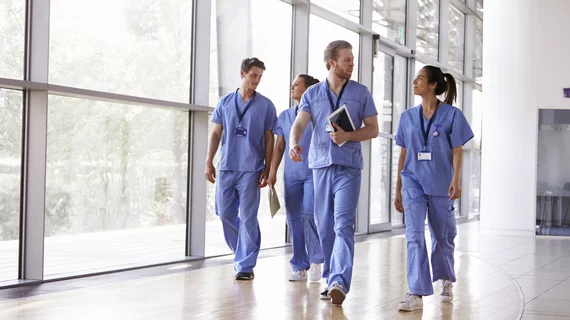Residency match cycle preference-signaling a hit among radiology programs
Preference signaling during the most recent match cycle has been beneficial for both residents and radiology programs alike.
Experts from Mayo Clinic in Jacksonville, Florida recently detailed their experience with the new offering, sharing that out of their 10 top ranked candidates, six had signaled the program [1].
They provided additional insight into their experience with preference signaling in a new paper published in Current Problems in Diagnostic Radiology.
“The idea of the supplemental application is to give the applicants extra space to elaborate on their previous experiences and show genuine interest in certain programs,” senior author Alok A. Bhatt, MD, and colleagues explained. “Opting to signal programs during the initial application submission may be beneficial for both the applicants and the programs in finding the optimal match.”
In 2021, the Association of American Medical Colleges (AAMC) announced the addition of supplemental applications for upcoming residents applying to dermatology, surgery and internal medicine. For the 2022-2023 cycle, supplemental applications expanded into 16 other specialties, including diagnostic radiology. These applications include the addition of three optional sections candidates can choose to complete: influential past experiences, geographic preferences and program signals.
The program signal section offers candidates an opportunity to formally express interest in up to six different programs.
In the 2023 DR match season, Mayo Clinic Jacksonville received 1,294 applications; 108 of those signaled the program. Interview invitations were sent to 104 applicants, of which 23 had signaled preference. Six out of their top 10 candidates signaled the program, and out of the final five matched applicants, 80% utilized the signal option and 100% completed the geographic preference section.
The group noted that they found it beneficial to know that candidates who signaled the program would feel comfortable living in their location, adding that this also helped to give them an idea of where candidates see themselves working in the future.
“During the interview process our goal is to determine which applicants demonstrate sincere interest in their future growth and potential as a radiologist and which applicants would integrate well into our program culture,” the authors noted. “The supplemental application helped reveal many aspects in the applicants such as past experiences that inspired the applicants or life events that changed them in a positive way.”
Program directors felt that candidates who utilized preference signaling also exhibited more goal-oriented explanations pertaining to their interest in the program.
“As selection for interviews and ultimate rank order evolves away from a focus on USMLE scores, it is important to focus our discernment on who would be a good fit for our program based on their goals, potential for success and wellness professionally and personally,” the authors concluded, before encouraging future applicants to utilize the supplemental applications.
To learn more, click here.

